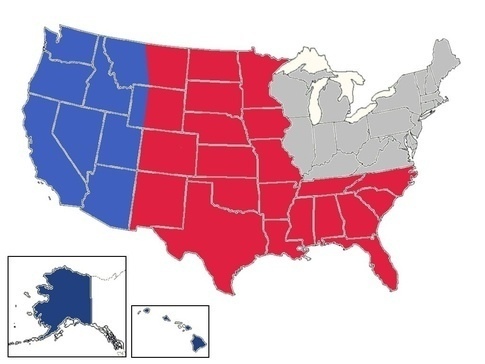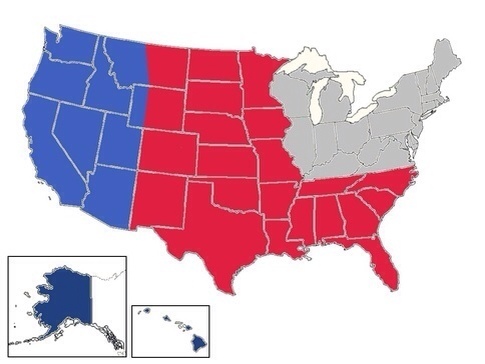I have to admit, my main response to all those petitions to secede after the presidential election was to laugh, shrug, and move on with my day. However, one very creative author came up with a much more entertaining take on secession, turning into an alternate history account of what civil war would look like if every state fended for itself.
Slate has the full tale, but here’s a taste:
The first real occupation attempts happened when attempts were made to secure more assets.
The Republic of Texas sought to gain strategic advantages in the Central United States. To do this, they sought to gain two strategic assets. The first was control of Whiteman AFB, the home of the B-2 bomber program. The base was easily secured, and the most coveted military bomber in the world was now in the hands of the Republic of Texas. The next was control of Colorado and her military installations of great value. Then finally was access to the Mississippi River. Two main offenses took place to do just that. The First Battle of New Orleans involved a massive force occupying the city to claim it as a port and artery for future engagements. In Colorado, they met stiff resistance as many of the Texas military were unfamiliar with Mountain warfare. Colorado’s major bases fell quickly since Colorado enjoys the smallest force to fight back the Texans, but they adapted an unconventional warfare stance that kept the Texans on edge for months. Still, at this point the mission behind taking Colorado had been achieved — control over its military bases and strategic assets. The insurgency does however slow down the growth of Texas.
New York pushed Northward. They pushed to claim all of New England and the food wealth they will need to supply their people now that resources from the Midwest are no longer available. The take over is mostly peaceful as many of the states have large, but mostly non-military populations. They encountered problems when large groups of refugees tried to flee to Canada and rioting ensued.
The whole tale isn’t super long, but it makes me hope the author expands it into a full book. There is certainly plenty of potential material even in the short story version. Though I have to admit to being disappointed that my home state of New Jersey doesn’t show up as a major player in this thought-experiment…we are a small state, but we are damn scrappy!

